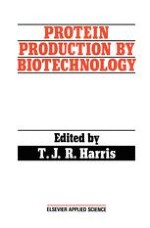1990 | OriginalPaper | Buchkapitel
Large Scale Culture of Mammalian Cells for Production of Therapeutic Proteins
verfasst von : J. R. Birch
Erschienen in: Protein Production by Biotechnology
Verlag: Springer US
Enthalten in: Professional Book Archive
Aktivieren Sie unsere intelligente Suche, um passende Fachinhalte oder Patente zu finden.
Wählen Sie Textabschnitte aus um mit Künstlicher Intelligenz passenden Patente zu finden. powered by
Markieren Sie Textabschnitte, um KI-gestützt weitere passende Inhalte zu finden. powered by
Animal cell technology has been playing an important role in the production of therapeutic products for more than 30 years. Following the introduction of polio vaccine in 1954 a number of other vaccines have been produced in animal cell culture, including measles, mumps and rubella. The technology has also been applied to the production of veterinary products such as foot-and-mouth disease virus vaccine. This particular vaccine, made in baby hamster kidney (BHK) cells, still represents one of the largest animal cell processes with millions of litres of culture fluid a year being processed.1 During the 1970s animal cell culture was developed for the manufacture of some natural cell products which are now used clinically; such as urokinase and interferon ß. The early human therapeutic products were manufactured in ‘normal’ cells, typically human diploid fibroblasts. These cell types have limited utility for applications requiring very large scale manufacture because they have a finite lifespan, are anchorage dependent and tend to require complex (and therefore expensive) culture media. In recent years attention has turned to the use of immortal cell lines such as myelomas and Chinese Hamster Ovary (CHO) cells which have an infinite lifespan, usually grow in suspension and can be cultured in less complex media than ‘normal’ cells.
